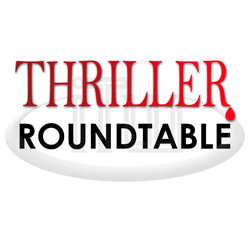

September 6 – 11: How do you keep the middle of a novel compelling?
As writers and readers, we love a beginning that hooks us, and a twisting ending that won’t let us go. But what about the often overlooked Act II? How do you keep it equally compelling?
Help kick off the fall Thriller Roundtable season by joining Jim Duncan, Steven James, Todd Ritter, and Kathleen George for a fresh new Thriller Roundtable discussion!
~~~~~~~~~
Living and working away in the state of Ohio, Jim Duncan is a writer of dark, urban-fantasy-suspense. His first novel, DEADWORLD, published by Kensington, will be out in April, 2011.
Steven James is the award-winning, national bestselling author of four critically acclaimed thrillers: The Pawn, The Rook, The Knight and The Bishop. He has a Master’s Degree in Storytelling and has taught writing and creative communication throughout the world since 1999. When he’s not writing and speaking he’s playing basketball, rock climbing or eating pepperoni pizza with his three daughters.
Todd Ritter’s first mystery, DEATH NOTICE was published in 2010 by St. Martin’s/Minotaur. The follow-up, BAD MOON, will be released next month. He is a journalist and editor based in New Jersey but born and raised in Pennsylvania. He can frequently be found posting YouTube videos of baby animals on Twitter.
Kathleen George lives in Pittsburgh where she is a professor of theatre at the University of Pittsburgh. Her latest novel THE ODDS was nominated for an Edgar® award for best novel of the year by the Mystery Writers of America. She is also the author of the acclaimed novels TAKEN, FALLEN, and AFTERIMAGE, the short story collection THE MAN IN THE BUICK, scholarly theatrical books and articles, and many short stories.Coming soon in 2011 are HIDEOUT, another novel in the Richard Christie series, and Pittsburgh Noir, an edited collection of short fiction set in Pittsburgh.
- LAST GIRL MISSING with K.L. Murphy - July 25, 2024
- CHILD OF DUST with Yigal Zur - July 25, 2024
- THE RAVENWOOD CONSPIRACY with Michael Siverling - July 19, 2024

